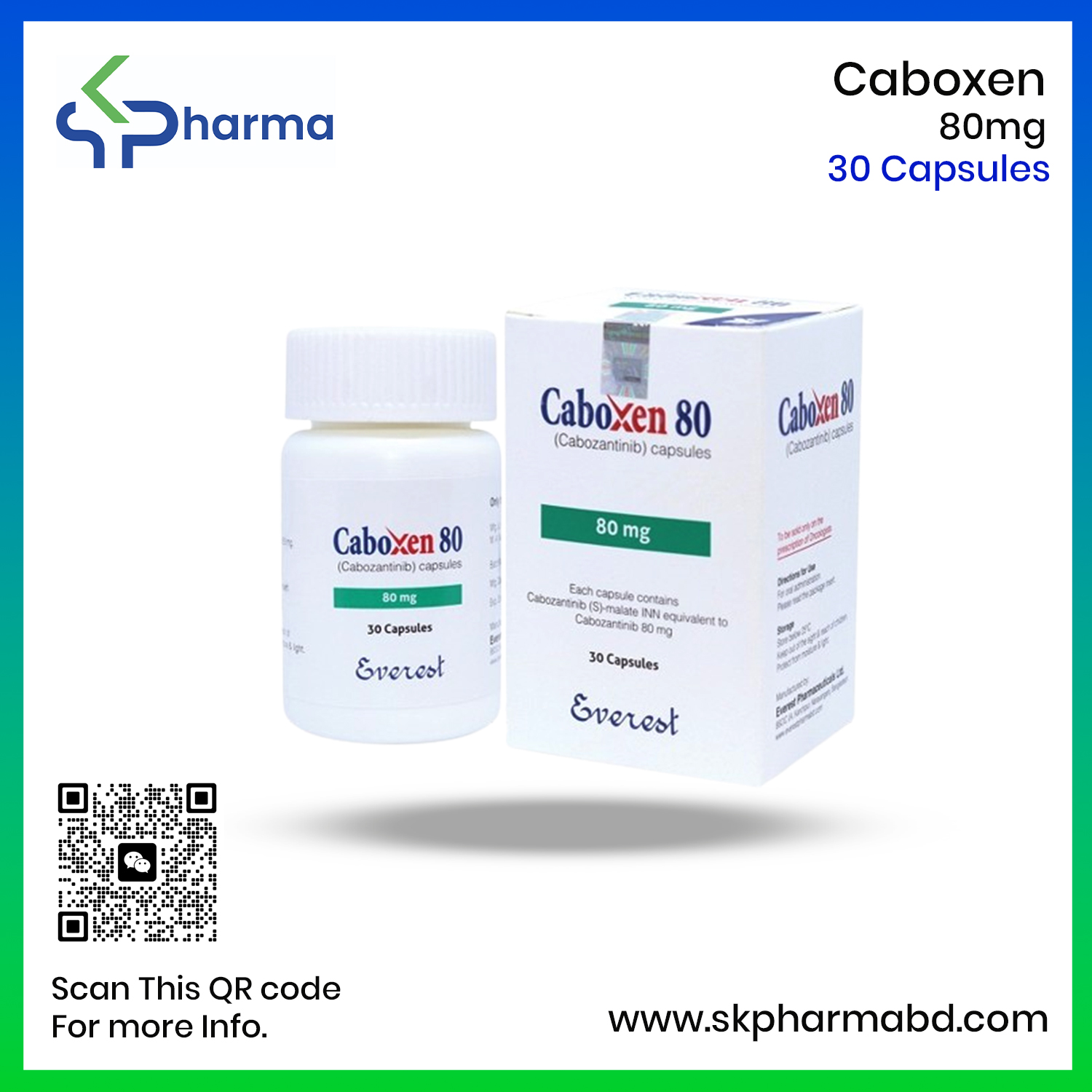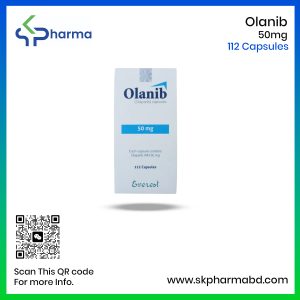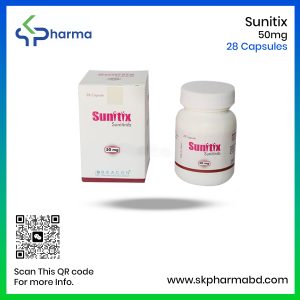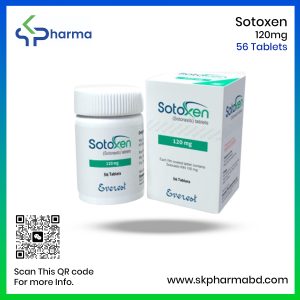Caboxen 20 Mg (Cabozantinib)
Related products
Product Description
Caboxen 20 mg (Cabozantinib)
CABOXEN 20 capsules contain Ceboa? Nib (S/malate INN equivalent to 20 mg Cabozantinib.
CABOXEN 80 capsule: Each capsule contains Cabozantinib (TS)-malate INN equivalent to 80 mg of Cabozantinib.
CLINICAL PHARMACOLOGY
Mechanism of Action
In Vida biochemical and/or cellular assays have shown that Cabozantinib inhibits the tyrosine kinase activity of MET, ET, VEGFR-1, -2 and -3, AXL, FiET, PO’21, TYRO3, MeFi, KIT, TFiKB,
FLT-3, and TIE-2. In tumor microenvironments, receptor tyrosine kinases are involved in oncogenes, metastasis, tumor angiogenesis, and drug resistance.
NONCLINICAL TOXICOLOGY
Cemlnogenesl¥, Mutagenesle, impelrmeM of 6eniiKy
The carcinogenic potential of Cabozantinib has been evaluated in two species ratio transgenic mice and Sprague-Dswïey rate. Once-daily oral administration of Cebozant! A dose of mg/kg resulted in a significantly increased incidence of malignant and complex malignant pheochromocytomas in combination with benign pheochromocytomas, or in benign pheochromocytomas alone in male rats
baseline or resolution to Grade ), reduce the dose as follows:
I previously received a 140 mg daily dose, now receiving 100 mg daily (one 80-mg and one 20-mg capsule).
II previously receiving 100 mg daily dose, resume treatment al 60 mg daily (three 20-mg capsules)
In case of the previous 60 mg daily dose, resume at 6Q mg if tolerated, otherwise, discontinue:
Development of steel perforation or f! Studs formation
Severe hemorrhage
Serious arterial thromboembolic event (e g., myocardial infarction, cerebral infarction)
Nephroiio síndrome
Uncontrolled hypertension despite optimal medical management.
Osteonecrosis of the ¡aw
Reversible posterior leukoenoephalopaihy síndrome
In Patients Concurrently T¥klng ¥ Strong CYRsA4 Inhlbhor
Reduce Cabozantinib dosage by 40 mg daily (for example, from 40 mg to 60 mg daily).
Proteinuria
was observed in 4 of the patients 0abozan- lining, including one with es ed lo none of
receiving placebo. urine
Cabozantinib treatment. Cabozanlinib pacients
RsverslbN Posterior Lo ikosnoaphelopathy rome
Reversible Leukoencephalopathy a
Pregnancy
Based on findings of home enamel Mudie’s and its mechanism of action, cabozantinib can cause fetal harm when administered to a pregnant woman. There are no available data on pregnant women to inform In animal dweloprrieMal and reproductive toxicology Mudie’s administration d lzenànio o pregnant rate and rabbis during organogenesis resulted in embryofetal lethality and structural anomalies at exposures Prat were below those occur ring clinically at the recommended dose. pregnant women or women of the childbearing potential of the potential hazard to a fetus
human exposure by AUC at the recommended 60 mg dose).
Cabozantinib was not carcinogenic in a 26-week carcinogenicity study in RasH2 transgenic mice at a slightly higher exposure than the intended human therapeutic exposure.
Cabozantinib was not mutagenic in vitro in the bacterial reverse
Resume the dose that was used prior to initiating the CYP3A4 inhibitor 2 to 3 days after discontinuation of the strong inhibitor. In Patients Concurrently Taking a Strong CYP3A4 Inducer, increase the daily cabozantinib dose by 40 mg (for example, from 140 mg to 180 mg daily or from 100 mg to 140 mg daily).
Manufactured by
Everest Pharmaceuticals Ltd.






